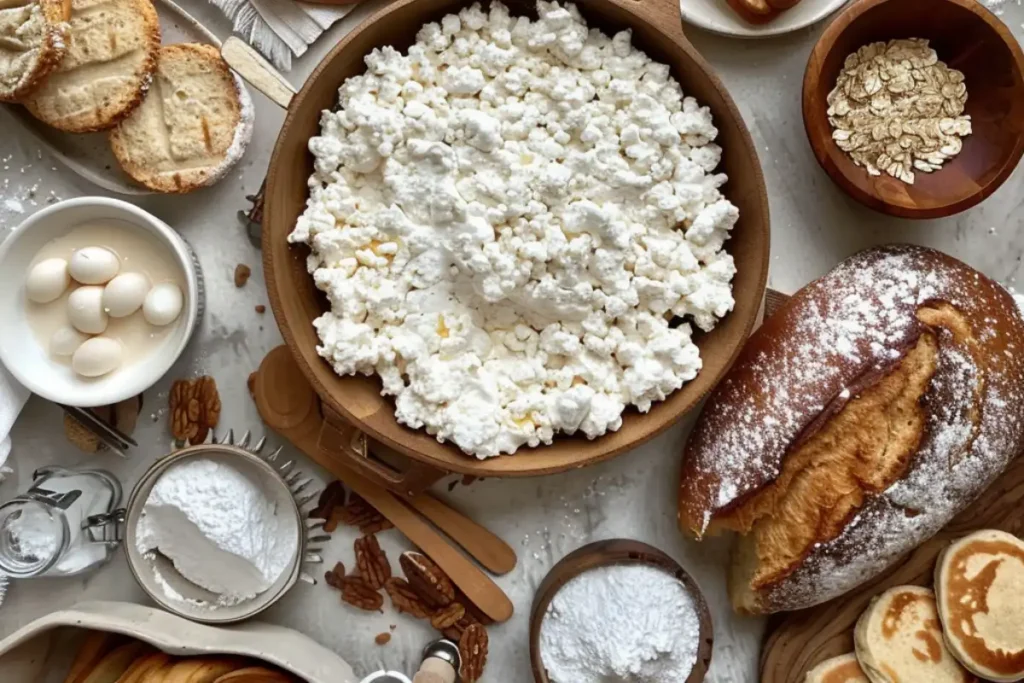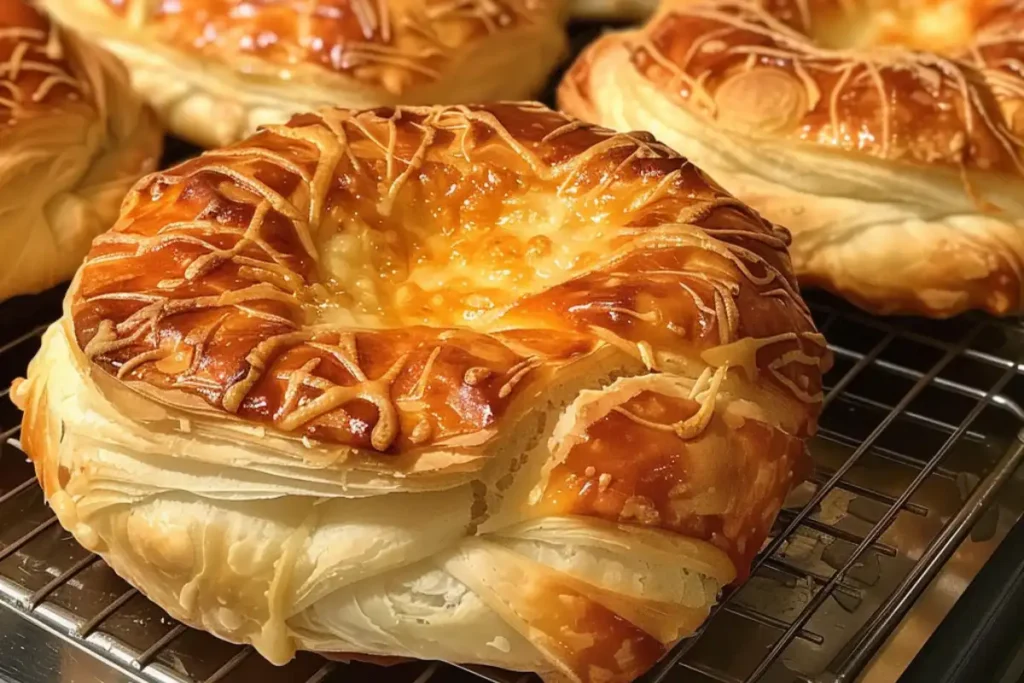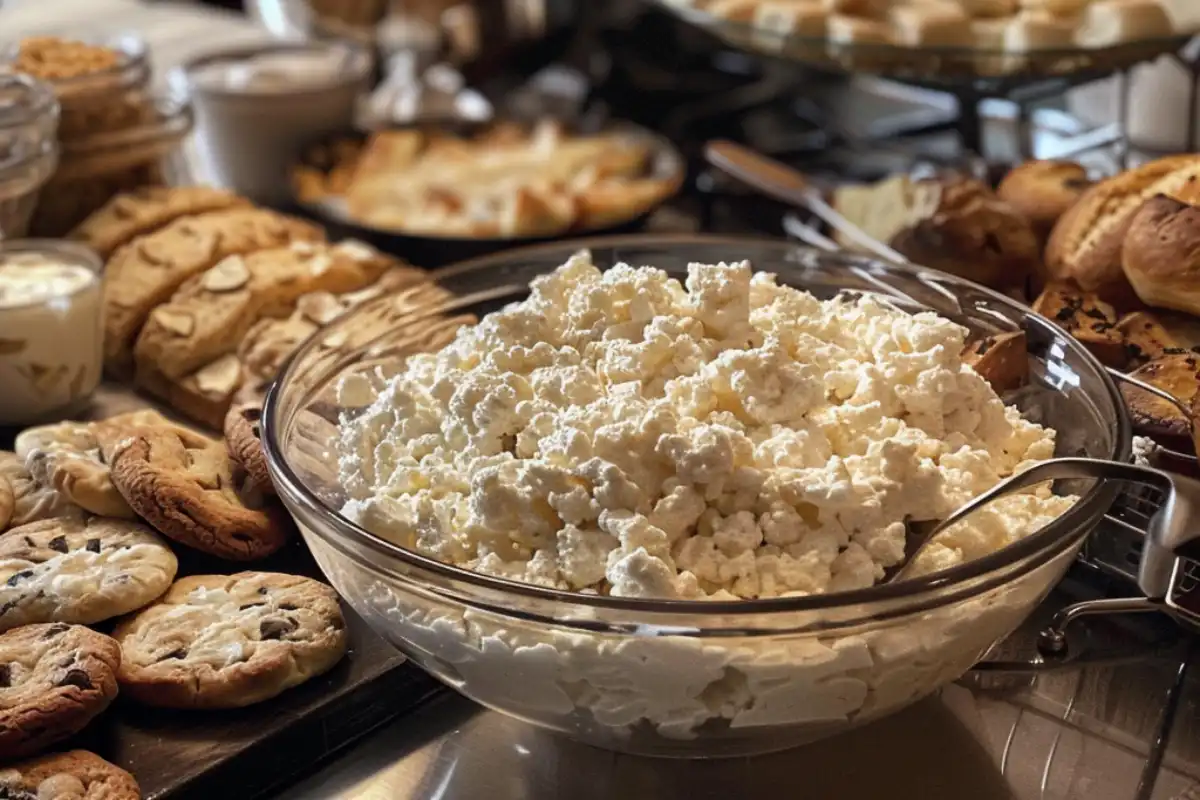When you think of baking, cottage cheese may not be the first ingredient that comes to mind. However, it is gaining popularity in kitchens for a variety of reasons. Known for its high moisture content and mild flavor, cottage cheese in baking brings a new dimension to both sweet and savory baked goods. In this comprehensive guide, we’ll explore the reasons why cottage cheese is used in baking, how it affects texture and flavor, and the best ways to incorporate it into your favorite recipes.
Table of Contents
The Growing Popularity of Cottage Cheese in Baking
Baking is all about achieving the perfect balance of flavors, moisture, and texture. Cottage cheese, once primarily known as a healthy snack or a savory ingredient, has found its way into the world of baking. But why?
Cottage cheese in baking offers several unique benefits:
- Moisture: Cottage cheese adds moisture to baked goods without making them soggy.
- Texture: It creates a creamy, tender crumb that enhances both sweet and savory recipes.
- Versatility: Cottage cheese can substitute for other dairy products like cream cheese, sour cream, or ricotta, making it a flexible ingredient.
The Versatility of Cottage Cheese
One of the key reasons for using cottage cheese in baking is its versatility. Whether you’re preparing a cheesecake, cookies, or even savory bread, cottage cheese can adapt to a variety of recipes. Bakers can use it in place of ingredients like butter or cream to create a lighter texture while maintaining richness.
The Science Behind Cottage Cheese in Baking

Why Cottage Cheese Works as a Dairy Substitute
Cottage cheese is more than just a low-fat alternative to other dairy products. It has a unique composition of fat, protein, and moisture, making it an effective substitute for ingredients like butter, cream, and ricotta in baked goods. Using cottage cheese in baking enhances both texture and nutrition, providing moisture and richness without excessive fat. Its curds, when blended, create a smooth, creamy texture that incorporates easily into batters and doughs, making it a versatile choice for healthier baking
Here are a few reasons why cottage cheese in baking works so well as a dairy substitute:
- Texture: When blended, cottage cheese breaks down into a smooth, lump-free consistency, perfect for cakes, cookies, and pancakes.
- Moisture Retention: The high water content of cottage cheese helps baked goods retain moisture, which prevents them from drying out.
- Protein Content: Cottage cheese contains a significant amount of protein, which can help stabilize batters and improve the structure of baked goods.
Moisture Control in Baking
- One of the most challenging aspects of baking is managing moisture. Too much moisture can lead to dense or soggy baked goods, while too little can result in dry, crumbly items. Cottage cheese in baking helps solve this problem by providing just the right amount of moisture, leading to light and fluffy baked goods.
In recipes like cakes or muffins, the added moisture from cottage cheese allows for a tender crumb, while in bread or savory dishes, it keeps the final product moist without becoming heavy.
For more tips on achieving perfectly moist baked goods, check out What Is the Secret to Moist Cupcakes?
Emulsifying Properties
- Another scientific reason cottage cheese in baking is its emulsifying properties. When cottage cheese is incorporated into a batter, it helps to combine fats and liquids, ensuring an even distribution of ingredients. This creates a smooth texture in the final product.
Cottage Cheese In Baking : Sweet Baked goods

Using cottage cheese in baking for sweet recipes offers a creative twist on traditional desserts. Its subtle tangy flavor enhances sweetness without overpowering it, making it an excellent choice for those looking to experiment with new textures and flavors. Incorporating cottage cheese in baking adds moisture and richness, resulting in soft, tender baked goods while also boosting protein content
1. Lemon Cottage Cheese Cake
One of the best examples of using cottage cheese in baking for sweet recipe is in Lemon Cottage Cheese Cake. By replacing heavier ingredients like cream cheese, cottage cheese delivers a light, airy texture with a slight tang from both the cheese and the lemon.
- Why It Works: Cottage cheese breaks down into the batter, creating a creamy texture while the lemon zest brightens the overall flavor. The tanginess of the cottage cheese complements the citrus, making the cake less heavy but just as flavorful.
2. Cottage Cheese Chocolate Chip Cookies
Chocolate chip cookies are a timeless classic, but adding cottage cheese to the dough creates a new spin on this favorite. The cheese provides moisture, resulting in a soft and chewy texture that lasts longer than traditional recipes.
- How It Enhances the Recipe: Cottage cheese adds moisture to the cookies, preventing them from becoming dry. It also contributes a slight tang, which balances the sweetness of the chocolate chips.
For a detailed recipe using cottage cheese in cookies, check out these Cottage Cheese Chocolate Chip Cookies!
3. Cottage Cheese Pancakes
Cottage cheese pancakes are another delicious way to incorporate this ingredient into your baking. These pancakes are fluffier and lighter than traditional pancakes because the cottage cheese adds moisture without making the batter too dense.
- How to Use It: Simply blend the cottage cheese into the pancake batter along with the wet ingredients. The result is a smooth and creamy consistency that yields soft, fluffy pancakes.
Cottage Cheese In Baking : Savory Baked goods

Beyond sweets, cottage cheese can be used in a variety of savory baked goods to enhance texture and flavor. Its versatility makes it a great ingredient for adding creaminess and moisture without the need for excessive fats.
1. Skillet Cornbread
Cornbread often struggles with dryness, especially if it’s baked without much fat. Adding cottage cheese to the batter can solve this issue, keeping the bread moist and tender. The slight tang from the cheese also adds complexity to the flavor profile.
- Why It Works: Cottage cheese adds both moisture and fat to the cornbread, preventing it from drying out. It creates a soft, fluffy texture that holds up well to being sliced.
2. Cottage Cheese Bread
Cottage cheese can also be used to make savory bread. The cheese lightens the texture, making the bread less dense, and its subtle tangy flavor pairs well with various spreads or toppings. Cottage cheese is particularly effective when used in bread recipes that typically require sour cream or yogurt.
- How It Enhances the Recipe: The addition of cottage cheese results in a softer loaf with a mild, tangy flavor. The bread remains moist and light, making it perfect for sandwiches or as a side for soups and stews.
If you love trying new baking recipes, check out this Downeast Maine Pumpkin Bread for a delicious and cozy treat!
3. Cheese-Filled Pastries
Pastries like turnovers or savory pies can benefit from the use of cottage cheese in their filling. The cheese adds a creamy texture without being overly rich, making it a great substitute for heavier fillings like cream cheese or ricotta.
- How to Use It: Mix cottage cheese with herbs, spinach, or other fillings to create a flavorful, creamy interior for your pastries.
How to Incorporate Cottage Cheese into Baking
One of the most important aspects of using cottage cheese in baking is ensuring that it blends smoothly into the batter. Unblended curds can lead to an uneven texture in your final product, so it’s important to break down the cheese before incorporating it into your recipe.
How to Blend Cottage Cheese for Baking:
- Blender or Food Processor: These are the most effective tools for creating a smooth consistency. For cakes or cookies, blend the cottage cheese until it’s completely smooth and lump-free.
- Hand Mixer: A good alternative for doughs or batters where a slightly chunkier texture is acceptable.
For more tips on achieving the right texture, here’s a guide on blending cottage cheese for smooth batters.
Using cottage cheese in baking offers a wealth of benefits. Its ability to provide moisture, enhance texture, and add subtle tang makes it an excellent ingredient for both sweet and savory recipes. Whether you’re trying to lighten up a cheesecake, add moisture to pancakes, or create a tender loaf of bread, cottage cheese is a versatile and effective ingredient.
By incorporating cottage cheese in baking routine, you open up a world of possibilities. The results are baked goods that are soft, moist, and flavorful without being overly rich or heavy. From pancakes to cornbread, cheesecakes to cookies, cottage cheese can transform your favorite recipes into something new and exciting.
For more recipes and tips, check out how cottage cheese can enhance other baked goods, such as in a strawberry crunch poke cake.
FAQs: About Cottage Cheese In Baking
1. What are the benefits of using cottage cheese in baking?
- Cottage cheese adds moisture and creaminess to baked goods, helping to prevent dryness. It also lightens recipes that typically require heavier dairy products like sour cream or butter, making them healthier without sacrificing flavor or texture.
2. Can I use cottage cheese as a substitute for cream cheese or ricotta?
- Yes, cottage cheese works well as a substitute for both cream cheese and ricotta in baking. It provides a similar creamy texture but is lighter and less fatty. For cheesecakes, bread, or even savory fillings, cottage cheese is a perfect alternative.
3. Does cottage cheese melt when baked?
- Cottage cheese does not melt in the same way as other cheeses, but it does break down and incorporate into the batter or dough. This ensures a smooth, creamy texture in the final product, without leaving any visible curds.
4. How do I ensure that cottage cheese blends smoothly into my recipes?
- To avoid lumps, blend cottage cheese in a food processor or blender before adding it to your batter or dough. This ensures a smooth and consistent texture, especially in recipes like cakes or cookies.

